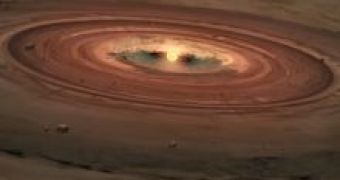Scientists at Penn State using a combination of ground-based and orbiting telescopes have discovered a failed star, less than one-hundredth the mass of the sun, possibly in the process of forming a solar system.
The discovered object, called a brown dwarf, is described as a "failed star" because it is not massive enough to sustain nuclear fusion like our sun. The object is only eight times more massive than Jupiter.
The fact that a brown dwarf this small could be in the midst of creating a solar system challenges the very definition of star, planet, moon and solar system.
According to the researchers, Cha 110913-773444 9 (the name of the brown dwarf) is the smallest known star-like object to harbor what appears to be a planet-forming disk of rocky and gaseous debris, which one day could evolve into tiny planets and create a solar system in miniature.
"Our goal is to determine the smallest 'sun' with evidence for planet formation," said Kevin Luhman, head of research team. "Here we have a sun that is so small it is the size of a planet. The question then becomes, what do we call any little bodies that might be born from this disk: planets or moons?"
If this protoplanetary disk does form into planets, the whole system would be a miniaturized version of our solar system, with the central "sun", the planets and their orbits all roughly 100 times smaller.
A protoplanetary disk is a flat disk made up of dust and gas that is thought to clump together to form planets. Our solar system was formed from such a disk about 5 billion years ago.
NASA's Spitzer telescope has found dozens of disk-sporting brown dwarfs so far, several of which show the initial stages of the planet-building process.

 14 DAY TRIAL //
14 DAY TRIAL //